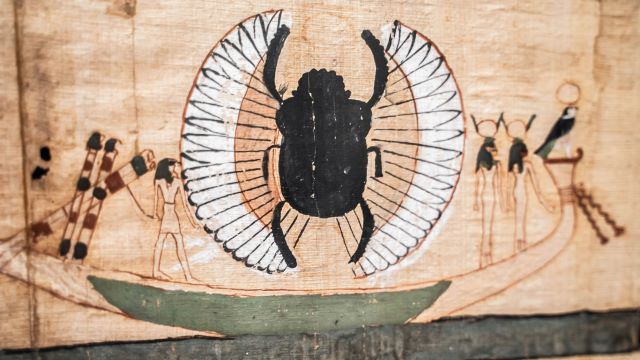In museums across Cairo, from the Egyptian Museum in Tahrir Square to the halls of Luxor’s temples, the art of ancient Egypt continues to draw fascination. Carved in stone, painted on walls, or preserved in papyrus scrolls, these works reveal a civilization that used visual expression not simply for decoration, but as a language of belief, identity, and power.
The Egyptians referred to writing as sesh—a term that implied recording and preserving knowledge. In their art, words and images often blurred, with hieroglyphics themselves functioning as both script and ornament. Tomb inscriptions, richly carved and colored, told stories of kings and commoners alike, ensuring that memory outlived mortality. Today, scholars and artists alike see in these inscriptions a model for the interplay of text and image, where meaning is layered as much as it is read.
Symbolism was central to this tradition. Every color, gesture, and posture carried weight: blue evoked fertility and the life-giving Nile, while green suggested rebirth. Figures stood in rigid poses not for lack of imagination, but to ensure clarity and permanence. Such choices created an art that communicated not only beauty but also a system of values. For contemporary creators, this language of symbols demonstrates how art can embed cultural codes into form.
Equally striking is the Egyptian emphasis on proportion and symmetry. Artists adhered to strict grids and ratios, producing compositions that balanced order with reverence. Wall paintings and sculptures followed conventions that remained remarkably consistent for centuries, reinforcing the connection between art, divinity, and cosmic order. The precision of these forms continues to inspire architects and designers who look to the past for lessons in balance and structure.
Themes of the afterlife, divinity, and human relationships also dominate. Scenes of funerary rituals, celestial journeys, and offerings to the gods conveyed both individual hopes and collective beliefs. These timeless subjects—mortality, love, the search for transcendence—still resonate. The endurance of these motifs underscores their universality, bridging millennia to speak to modern audiences.
Materials added further dimension. Limestone, sandstone, wood, gold, and lapis lazuli were transformed into objects that were at once utilitarian and sacred. Their durability helped preserve Egypt’s legacy, but their textures and colors also served symbolic roles. For many modern artists, the Egyptians’ resourcefulness with local and imported materials illustrates how medium itself can become message.
What emerges from this long tradition is not simply an archive of the past but an ongoing dialogue. Ancient Egyptian art, though codified by strict rules, was far from static. Its techniques and themes continue to influence painters, sculptors, architects, and designers who find in its symmetry, symbolism, and narrative power a timeless source of innovation.
In the silent gaze of a carved statue or the precise lines of a painted tomb, the artistry of ancient Egypt persists. It remains a testament to a civilization that believed art could preserve truth, honor the gods, and speak across generations—a belief that still finds echoes in creative practice today.
Sources:
- Wilkinson, Richard H. Reading Egyptian Art: A Hieroglyphic Guide to Ancient Egyptian Painting and Sculpture. Thames & Hudson, 1992.
- Robins, Gay. The Art of Ancient Egypt. Harvard University Press, 2008.
- Baines, John. “Symbolic Roles of Color and Form in Ancient Egyptian Art.” American Journal of Archaeology, vol. 87, no. 3, 1983, pp. 307–318.
- Assmann, Jan. Death and Salvation in Ancient Egypt. Cornell University Press, 2005.


